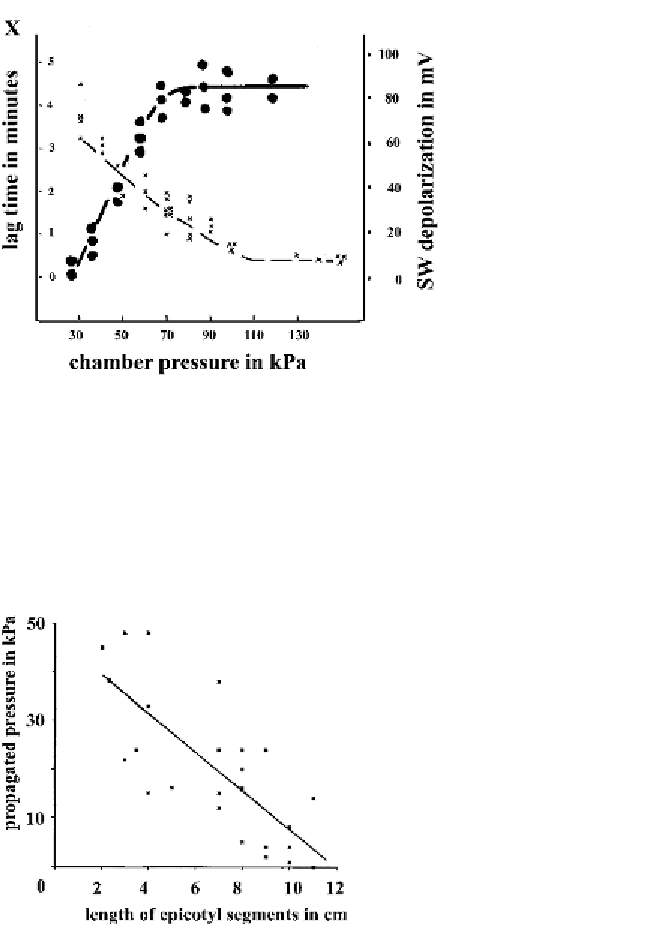Agriculture Reference
In-Depth Information
Fig. 20.3.
A compilation of measurements shows that SWP characteristics such as lag phases
(
crosses
) and amplitudes (
circles
) of SWP depolarizations depend on the size of the xylem
pressure steps (which are somewhat smaller than the actually shown pressure steps that were
appliedtothesubmersedcutendofanetiolatedpeaseedlingatadistanceof60mmfromthe
recording site, see Fig. 20.4). Note that a propagating SWP appears only at lower pressure
steps. At pressures above 100 kPa the induced slow wave (
SW
) depolarizations become
indistinguishable in time of appearance (lag phase
0 s) and amplitude. (Compiled from
unpublished and published data from Stahlberg and Cosgrove 1997a)
→
Fig. 20.4.
Regression analysis of pressure propagation in epicotyl segments of various lengths
shows the linear dissipation of a constant pressure step of 50 kPa from the basal end of
application towards the apex. The basal ends of pea epicotyl segments 2−12 cm long were
submersed and sealed into a pressure chamber while the apical end was sealed to a pressure
probe. A loss of about 4 kPacm
−1
reflects the radial leakiness of the xylem. (Redrawn from
Stahlberg and Cosgrove 1997a)

Search WWH ::

Custom Search